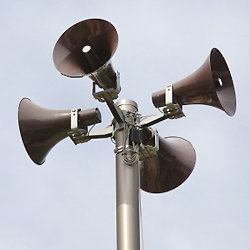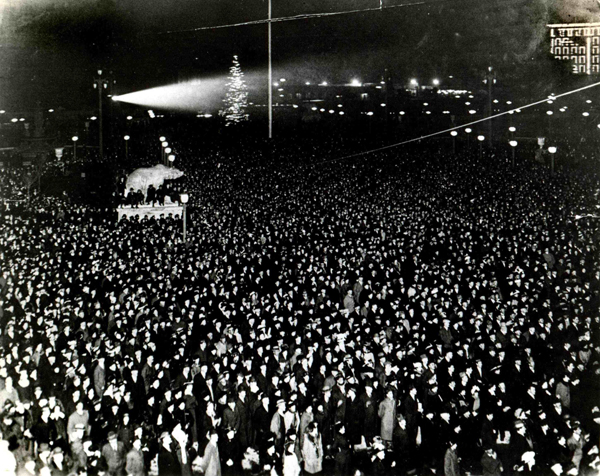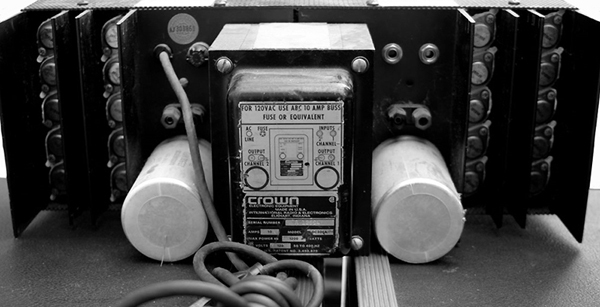
Extending The Reach
But by far the biggest change in live sound in the last 100 years is the PA system itself; today’s systems are light years ahead of those early efforts in every respect.
The Magnavox system in San Francisco for Christmas Eve in 1915 used a rudimentary carbon microphone connected to an amplifier powered by a handful of vacuum tubes that generated about 10 watts of power. This certainly wouldn’t have been enough power to address a crowd of 100,000 people were it not for the fact that the loudspeakers exploited the acoustic amplification afforded by a flared horn.
It’s interesting to ponder what it must have felt like for that crowd, being able to experience a concert that was so far away. Prior to that point, you would expect to be in close proximity to a musical ensemble in order to hear them. The newspapers reported that the concert was heard “with absolute distinctness,” and considering the gramophone and radio were both relatively new inventions, this must have been quite a unique experience for those present.
The people behind that ground-breaking system were Peter Jensen and Edwin Pridham, who would go on to form the Magnavox company in 1917. The company still exists today and is famous for bringing us the very first home video game console – the Odyssey, introduced in 1972.
But back in 1915 Magnavox was just the name of the PA system that Jensen and Pridham built as a result of a series of experiments in their Napa laboratory. (The name comes from Latin and means “great voice.”) One of their first experiments involved connecting a carbon microphone to a 12-volt battery, resulting in the first instance of acoustic feedback, a phenomenon that sound engineers have been dealing with ever since. They got around this rudimentary problem by mounting the loudspeaker on the roof of their laboratory, claiming that the amplified human voice could be heard one mile away (which must have been quite odd for their neighbors in that pre-amplification age).

The duo demonstrated their fledgling sound system by connecting it to a phonograph and playing pre-recorded music at their laboratory, as well as at the Pan Pacific Exposition and at Golden Gate park throughout December. After the seminal Christmas eve concert, another first quickly followed the next week with the amplification of the first outside broadcast on December 30. California governor Hiram Johnson was due to give a speech at the Civic Auditorium in San Francisco but was too ill to attend, so Jensen and Pridham connected a carbon microphone at Johnson’s home a few miles away to the system in the auditorium, enabling him to deliver his speech as a disembodied voice.
Keys Along The Way
Advances in sound system design and size were incremental through the first half of the 20th century; the main obstacle was amplification and the limitation of vacuum tubes. Jensen and Pridham built a 25-watt amplifier in 1919, and amps didn’t really start to get any bigger until the mid 1950s.
The invention of the transistor in 1947 promised a whole new era of smaller, more powerful amplifiers. but it took a while for them to usurp the valve behemoths. Part of the problem was the prohibitive expense of those early silicon transistors, germanium ones were much cheaper but had an annoying tendency to burn out, especially when presented with an unpredictable load.
Then, in 1967, a tape deck company produced one of the first truly reliable and powerful solid state amplifiers: the Crown DC300. It provided 150 watts per channel and offered low distortion and low noise thanks to it’s direct coupled DC operation. The success of the DC300 was aided by it’s size – at 7 inches tall and weighing just 45 pounds, it was less than a quarter the size and weight of an equivalently powered tube amplifier.

